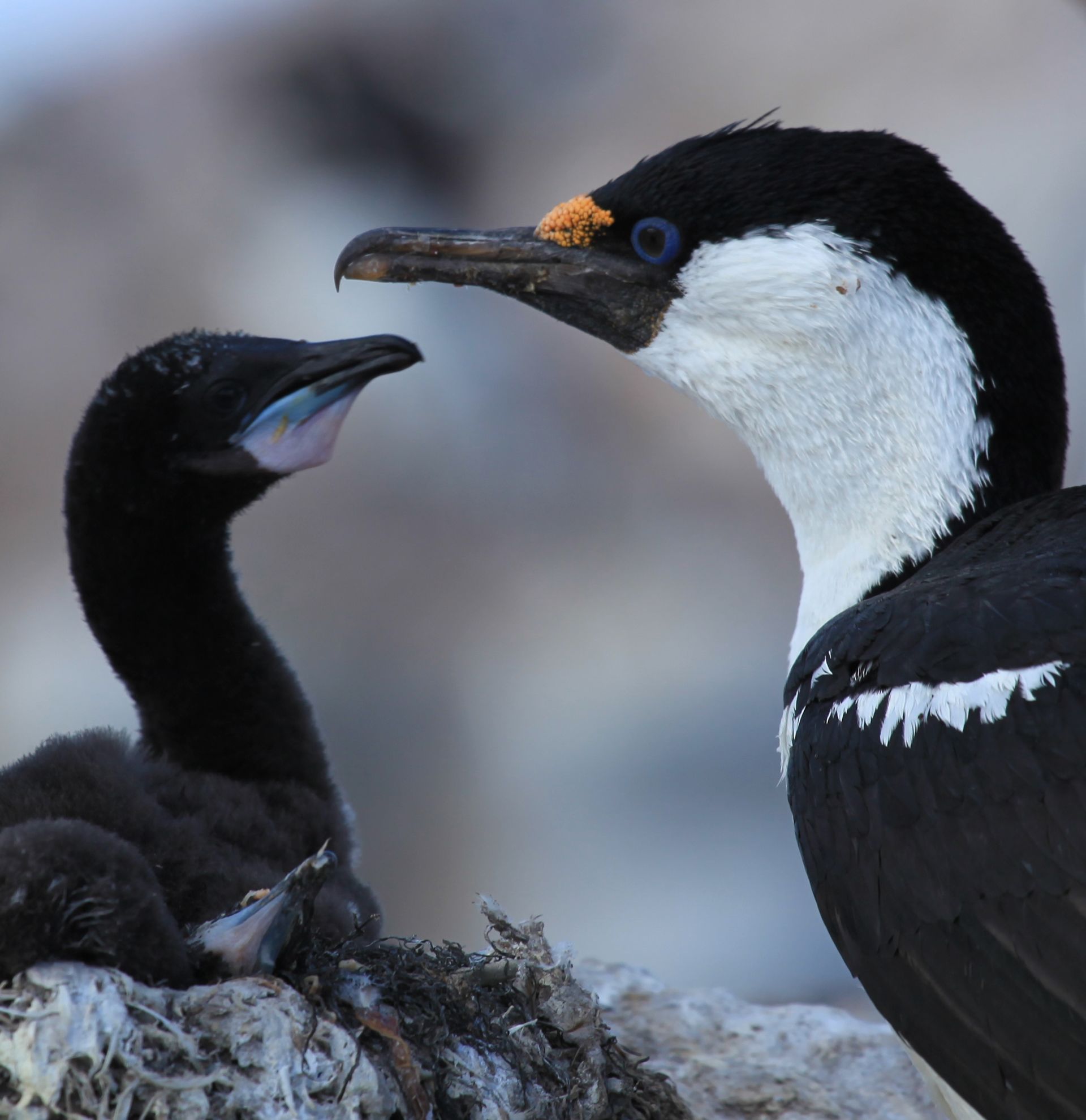Nothing can compare to kayaking in Paradise. For two hours, my kayaking partner and I leisurely toured Paradise bay. Often we just put our paddles down and floated disbelief of the overwhelming beauty surrounding us.
We heard a loud crack and turned to watch an enormous avalanche. We braced the boat incase it made it to the sea thus creating a large wave.
All remained calm on the water.
Turning into the sun and hearing a "aaark" ruckus, we paddled toward a cliff.The white in this picture is not snow.
The Antarctic Shag also called the Imperial Cormorant, King Cormorant, Antarctic Cormorant or Imperial Shag are the only species of the cormorant family found in the Antarctic. An adult is about 75-77 cm tall, has a wingspan of 124 cm and, weighs 1.5-3.5 kg. The most defining characteristics are the warty yellow caruncle on the forehead and blue skin surrounding the eye.
 |
| photo copied from Wikipedia |
It is estimated that flight speed can reach 50 km/hour and that Antarctic Shags usually dive 25 meters to feed on fish with a maximum of around 60 meters. "Shags can't predict how much time will be required to dive and capture prey. Once underwater, the bird looks for prey and reacts based on the situation. If a fish is found but the shag doesn't have enough oxygen, it will come back to the surface, thke in the largest amount of air possible, and dive again to capture the prey. This shows that the Antarctic Shag changes its diving strategy based on the situation." ~Wikipedia
"Many birds can't fly with wet feathers and diving in the water can cause feathers to become fully saturated. Often, you see waterbirds standing with their wings spread to dry off their feathers after diving. Antarctic Shags are unique in this respect and due to their dense inner plumage, this species doesn't need to dry off via wing-spreading like other diving bird species. These dense feathers close to the skin also prevent icy waters from hittting the skin. Additionally, birds having to spread their wings to dry could have further reduced body temperature in an already extremely harsh climate. Therefore, both the cold water and cold air have caused this species to develop over time" ~Wikipedia
Both genders build a nest from feather, seaweed, and ocean debris cemented with excreta and are reused for many years. Between October and December, the females lay 2 or 3 eggs. Both parents help incubate the eggs for 28-31 days. Chicks hatch without protective down and rely on parents to protect them for the first few weeks. We saw adults sitting on nests, molting juveniles, and adults feeding chicks crowding the nests.



















.jpg)




